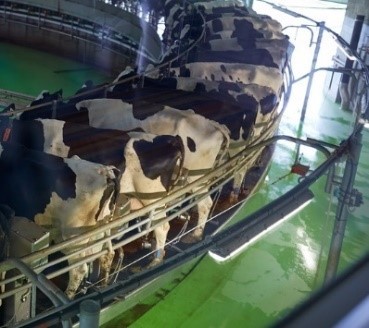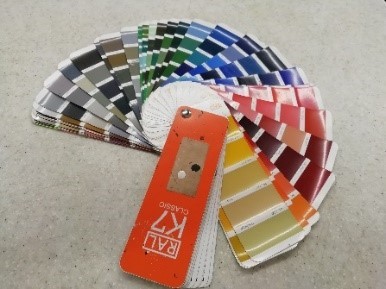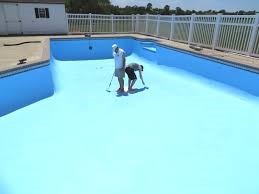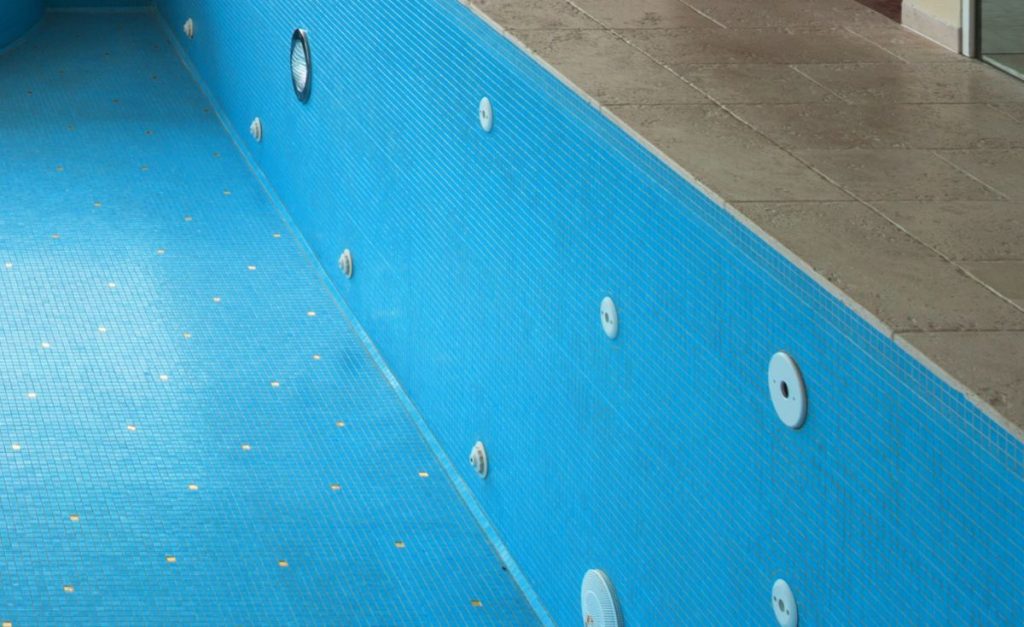All Blogs, Health and Safety, Hygiene, Priming and Protecting, Weatherproofing
What is Chlorinated Rubber Paint?
You may have heard people talking about chlorinated rubber paint and wondered where and how it is used. Chlorinated rubber paint actually has a whole range of uses because of its water repellency, flexibility, durability, chemical resistance and anti-mould qualities. It is used frequently in agricultural, industrial and leisure sectors where surfaces are exposed to chemicals, urine, sewage and more!
Why do People Use Chlorinated Rubber Paint?
While it’s been used for swimming pools for many years, it is now a popularchoice for domestic ornamental ponds, poolside areas and animal housing. It is also re-coatable, a great advantage if you fancy a change of colour. So why use chlorinated rubber paint? Here are four reasons why our customers say they use it:
1. Protection
Chlorinated rubber paint is widely used in situations where a surface is exposed to the elements because of its strong heat and water resistant properties. You’ll often find it on road line marking, manhole covers, swimming pools and animal pens. It is also a good choice in coastal areas where saltwater exposure can cause corrosion to steel/steel reinforced concrete and in factories where surfaces are susceptible to chemical damage.

2. Hygiene
Hygiene is a primary factor in the use of chlorinated rubber paint. It is the ideal coating in areas where hygiene is crucial because of its resistance to such a wide range of substances including chemicals (acids/alkalis, oxidising agents, moist gases, mineral oil) sewage, fungus, urine and mould. Areas painted with chlorinated rubber paint are also easy to hose or jet wash so regular cleaning is a simple, stress-free job. We supply a lot of our own chlorinated rubber paint, Carbochlor, to the agricultural sector for areas like milking parlours and livestock areas.

3. Appearance
Areas painted with chlorinated rubber paint can be kept clean easily and it is popular choice when frequent cleaning is necessary but where appearance is also important. Here at Palatine Paints we supply our chlorinated rubber paint, Carbochlor, in a wide range of colours from the RAL Classic and BS 4800/ BS381C colour charts. It’s therefore both a practical and an attractive coating. Just a few examples of where our customers use Carbochlor in places where visual appeal is important, include: swimming pools/poolside surfaces; ornamental ponds; kennels; stables; concrete septic tanks; laundry rooms, dairy parlours and livestock areas.
4. Versatility
Highly versatile, chlorinated rubber paint can be applied to an extensive range of surface types including: brickwork; concrete; steel; tarmac and wood negating the need to switch paints to cover different materials. Customers can choose to have anti-slip texturing added to this paint; this makes it ideal for areas like workshops and commercial kitchens, but also for dog runs and similar projects.

Handy tips when using chlorinated rubber paint
- Chlorinated rubber paint has a strong smell which takes a while to disperse especially when applied indoors. If you are applying indoors, the area MUST be well ventilated, use a suitable mask or respirator when applying. Wear gloves and chemical splash eye protection
- Using the wrong swimming pool and pond treatments can alter the chemical balance of the water and cause the paint to rub off. Always check the labels on cleaning products and water treatments
- Prepare properly – if the surface is not clean, the paint may blister or bubble. Remove all grease, grime and dirt then and fill any cracks or holes. Sweep out any leaves/bits of dust that may have blown in after cleaning/ before painting
- Avoid applying in very hot or cold temperatures – if applied in extreme temperatures the paint might blister so only apply at optimum temperature, between 10ºC and 25ºC
- Ensure surface is dry – the paint will not adhere effectively unless the surface is completely dry. This also applies between coats – so if it rains, make sure the paint cures before applying a subsequent coat
- Use a minimum of two coats
- If coating a pool or pond, leave for at least 7 days to dry before filling with water
- Application – apply with a brush or a solvent resistant roller
Finally, if you want to try this paint or ask a question…
Palatine Paints’ Carbochlor chlorinated rubber paint is available in 2.5L and 5L and in colours from the RAL Classic and BS 4800/ BS381C charts. Take a look at our product information here for more details, or talk to us via our online chat, email or phone. Since first publishing this article we’ve added an additional blog with questions your questions, just on this paint! So if you want to know about using it on: your caravan shower tray; stencilling on bike tyres; coating your dog run and more, take a look here


Can this paint applied in outdoor basketball court?
Hi Emma
This product can be used as a line marking paint on external concrete surfaces. We would always recommend to carry out a test area first to ensure compatibility with the surface.
I have a concrete shower basin and painted it with INSL-X rubber base paint. I cannot get the smell/vapors to dissipate. Any advice?
Our pool was painted with this type of paint, now, after filling 2 weeks ago the water smells of paint is this dangerous? Will the smell go?
What brand of paint was used?
Would this paint be suitable for a bedroom drywall after primer, but before main coat? If yes, would it be advisable to apply just the one coat, and then do (main) final coat (which is not chlorinated rubber)?
This depends on the primer you use but we recommend you leave a minimum of 24 hours before applying the chlorinated rubber paint and always do a test patch first. Carbochlor chlorinated rubber paint can be matched to colours on the RAL Classic and BS 381c/4800 charts so you could use this as the topcoat.
Can it be painted on the entire swiming pool tiles (swiming pool finish is tiles) ???? Will it stick on tiles????
Chlorinated rubber paint will adhere to tiles but the surface may need some abrasion to help. See the directions for use https://www.palatinepaints.co.uk/product/carbochlor-chlorinated-rubber-paint/
Can you paint top of campervan with this for extra protection
It should be suitable for this purpose as long as care is taken with application (and always do a small patch test first)
I am thinking of building a wooden shower tray in our campervan, could this be used to waterproof the wood
Yes this should be suitable in fact someone else has asked about caravan shower trays before…see question two in our blog
I have an indoor pool surround made of a hard rubberised matrial that looks like a lot of small compressed pellets fused into a flat mat like surface. Very durable, but the wrong colour. Can I use this chlorinated paint to paint over?
The chlorinated rubber paint should be fine but we always recommend a small test patch before treating a large area
can Chlorinated paint be applied over air drying anticorrossive primer prepared on long il alkyd resin?
Thanks for your question. In general we’d say that there is more likelihood of a reaction than not. However, if the primer has been place for a significant period of time (allowing the resins to completely harden and to ensure there has been no solvent retention) the likelihood of a reaction is reduced. This not something that can easily be measured due to so many dependent factors. We always recommend trying a small test patch first.
How do you clean brushes having used the chlorinated rubber paint
Hi Louise
Brushes can be cleaned with multi purpose thinners (Xylene Based). Here on our website if you need more details
Very good texts.